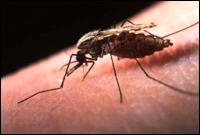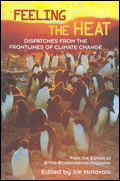Garbage Land: On the Secret Trail of Trash by Elizabeth Royte, Little Brown and Co., 320 pgs., 2005.
Our soda man delivers. He comes bounding up the steps, easily cradling an ancient-looking wooden crate under one arm. The contents are 24 seven-ounce bottles of cola and birch beer, for which we hand him $7, and last month’s crate. The thick, wavy glass bottles bear an old-fashioned logo that reads, “Castle Soda: Food for Thirst.”
Bottled in a declining industrial town in Connecticut, Castle is like some visitor from another time. The idea of returnable, refillable bottles seems quaint and archaic in the age of plastic. Indeed, the bottler tells us it’s impossible to find anyone who makes seven-ounce glass bottles anymore, so the company’s crates are dotted with outcasts from other local bottlers that went out of business in Connecticut, New York, and Pennsylvania.
I buy Castle not because it’s better than Coke, but because I love seeing those empties taken back to their source. Like Elizabeth Royte, author of Garbage Land, I’ve wondered and worried about what happens to all that non-returna... Read more



